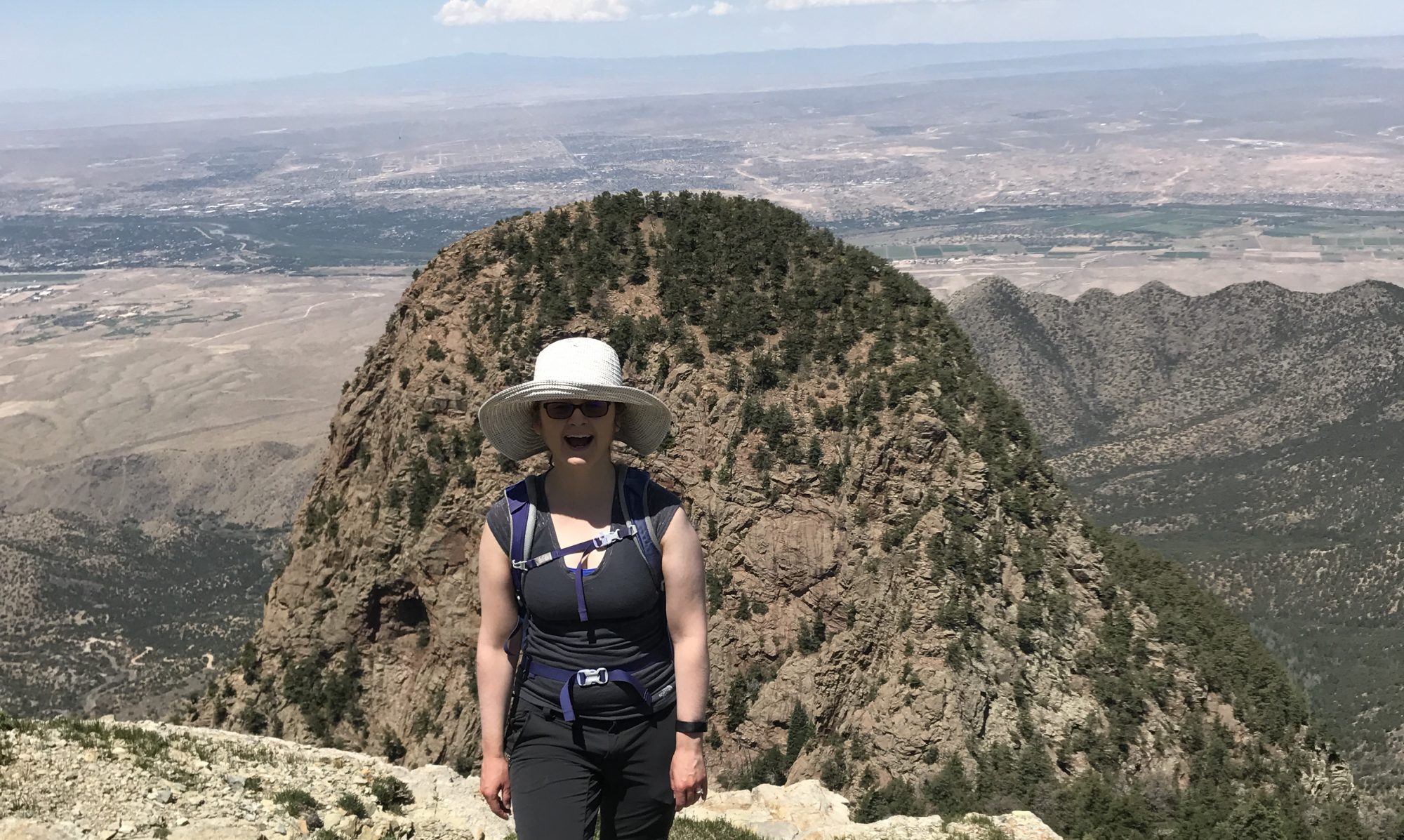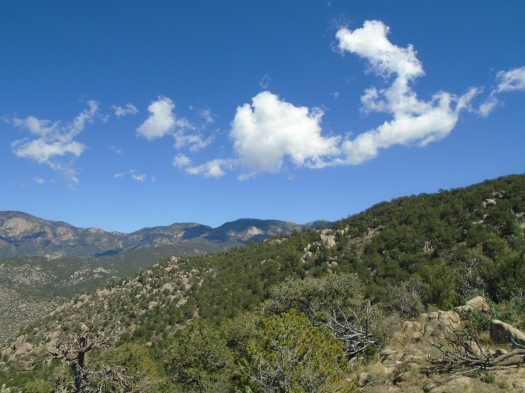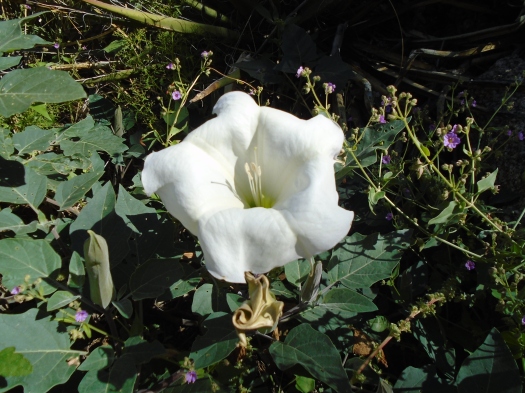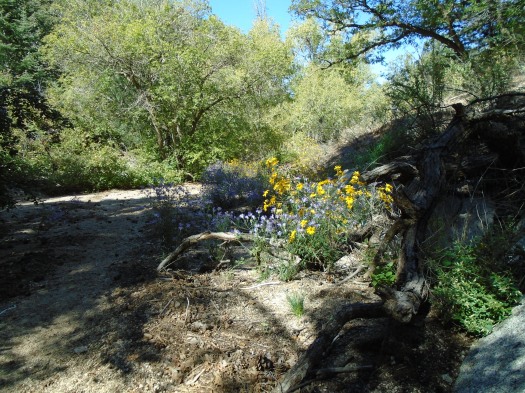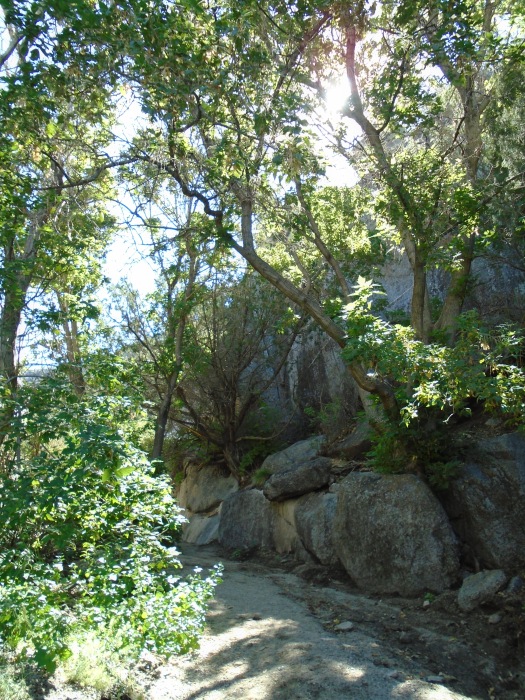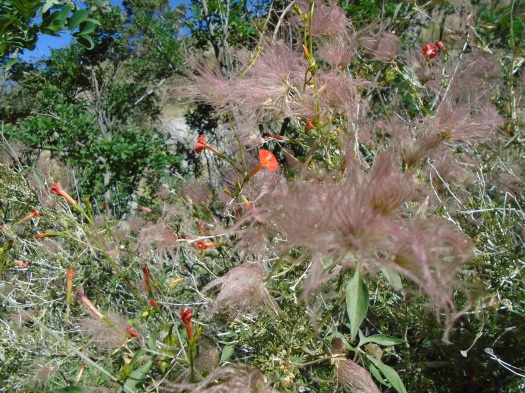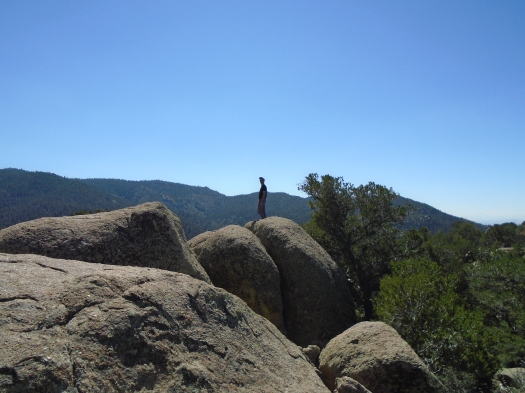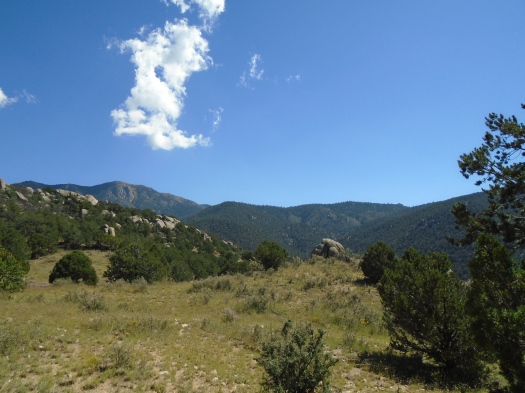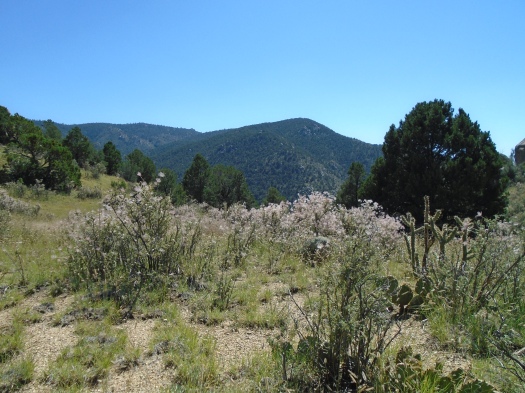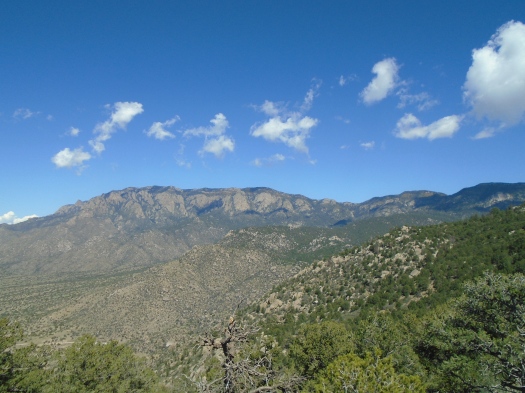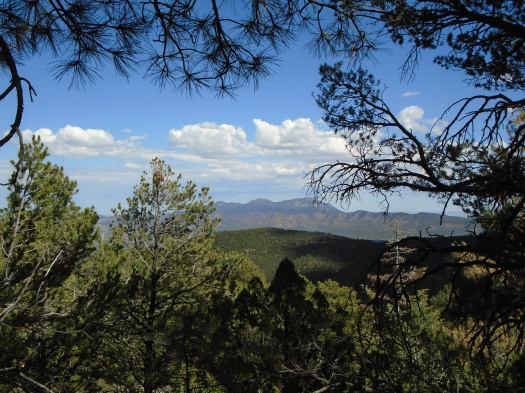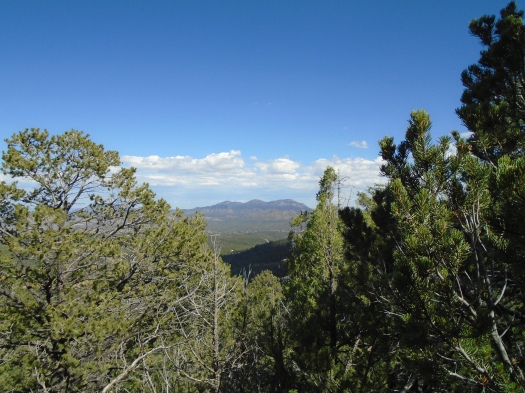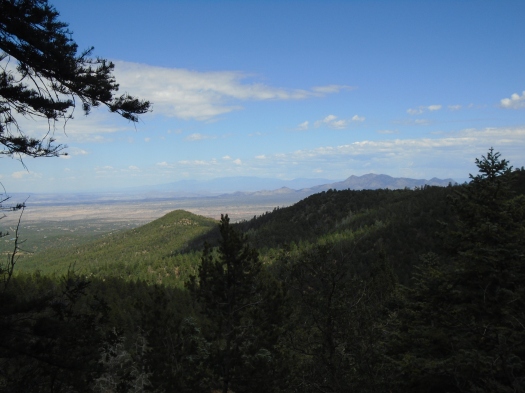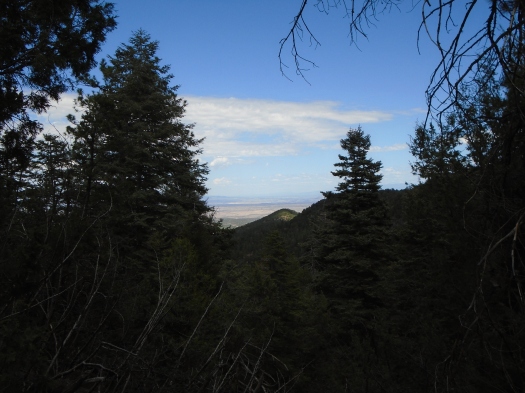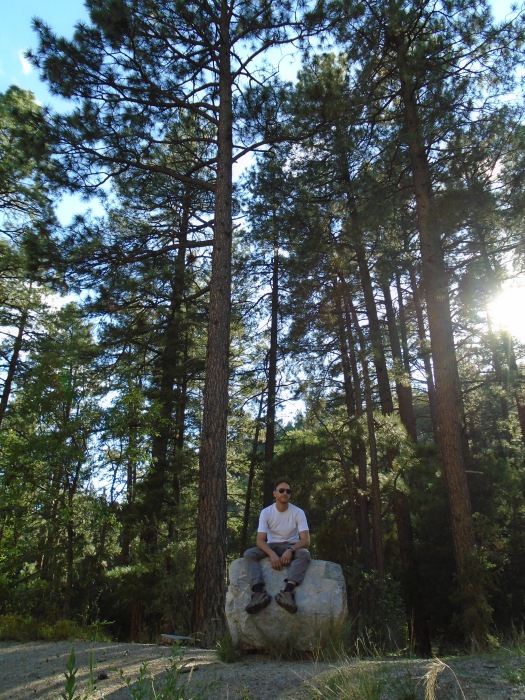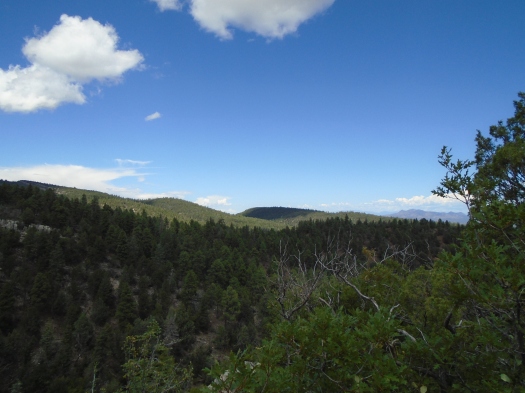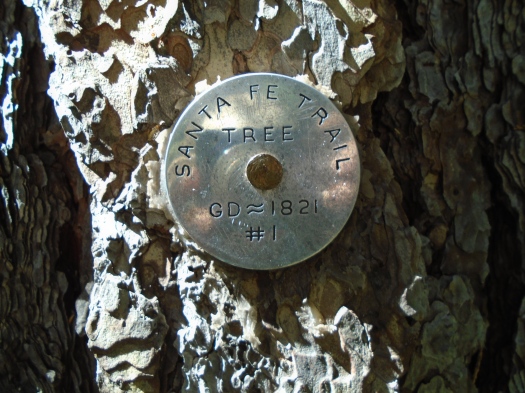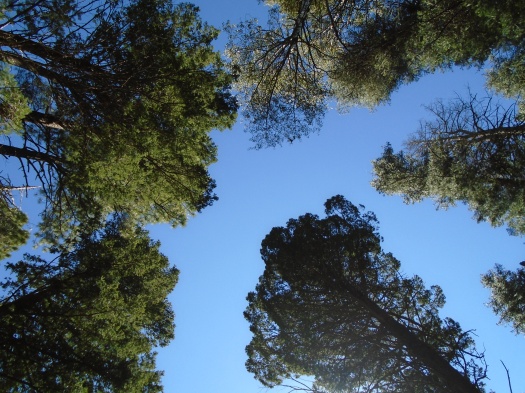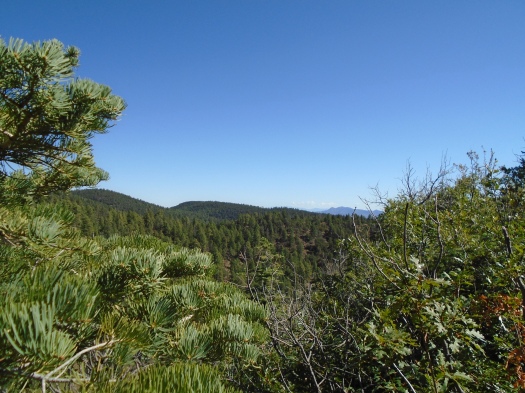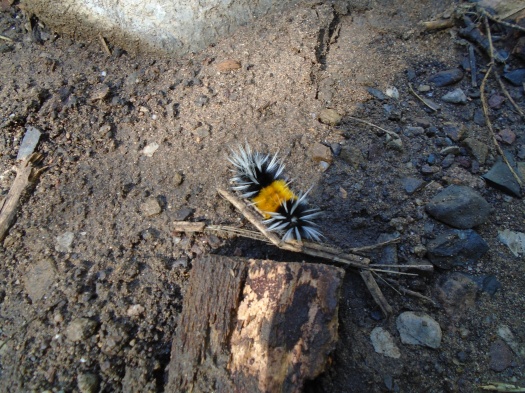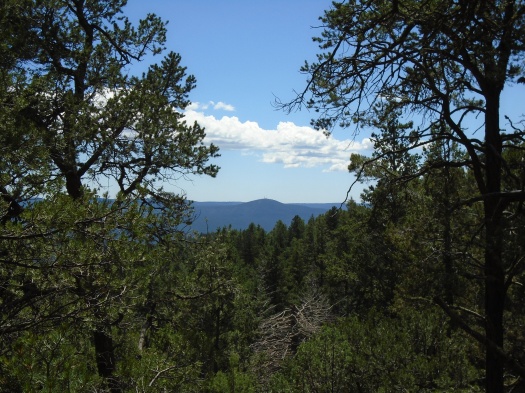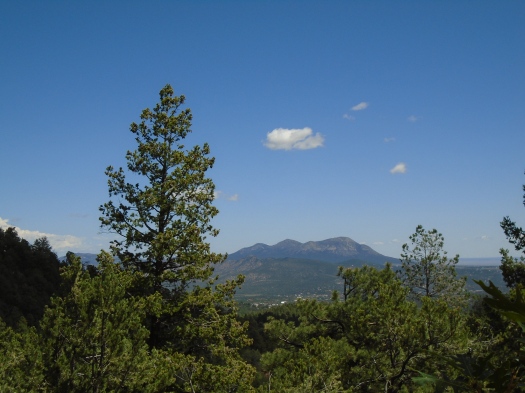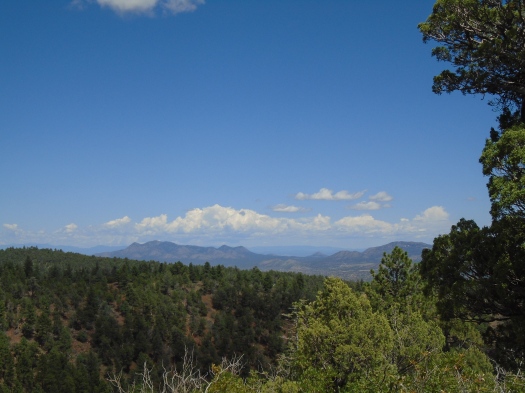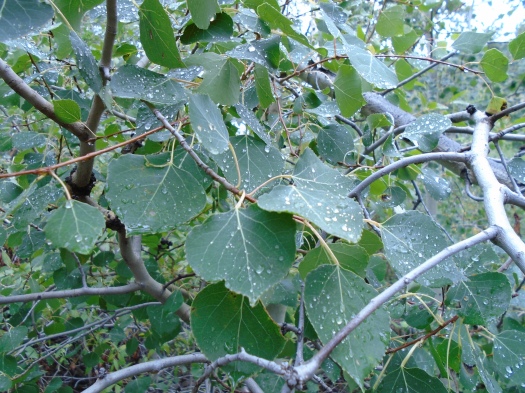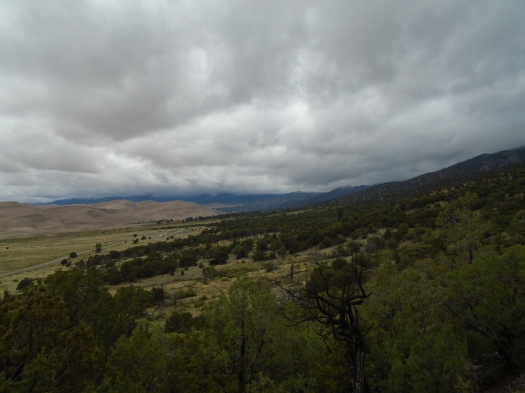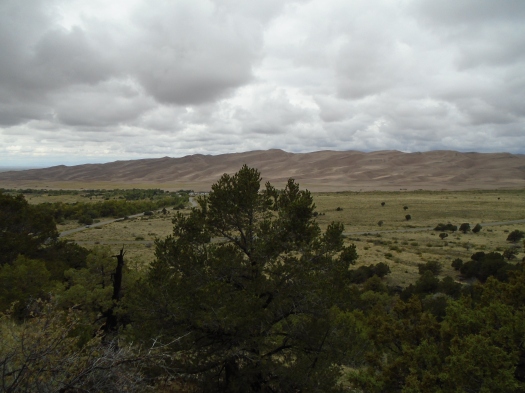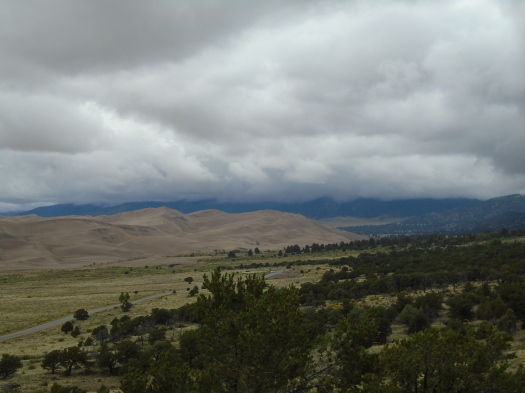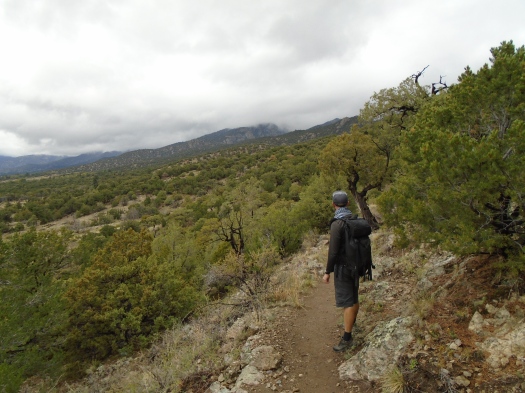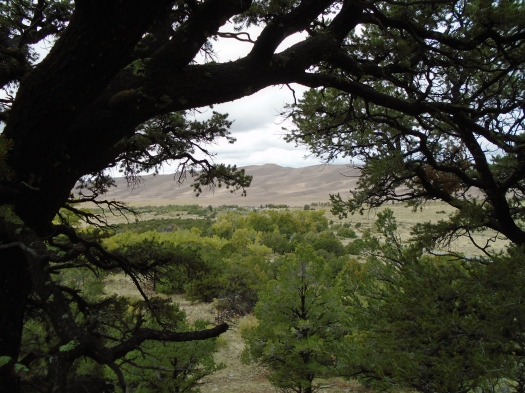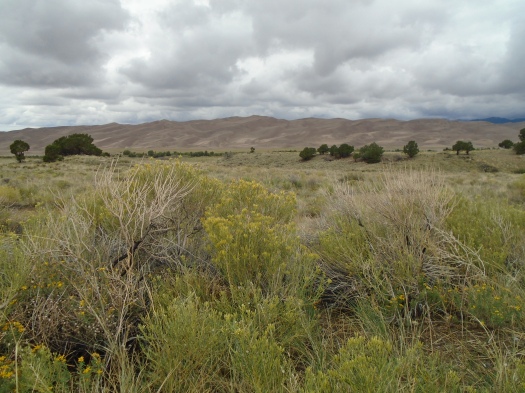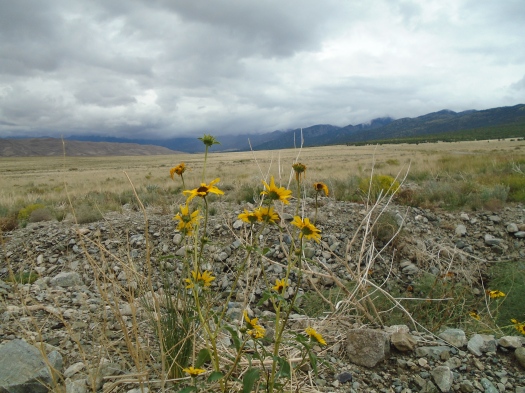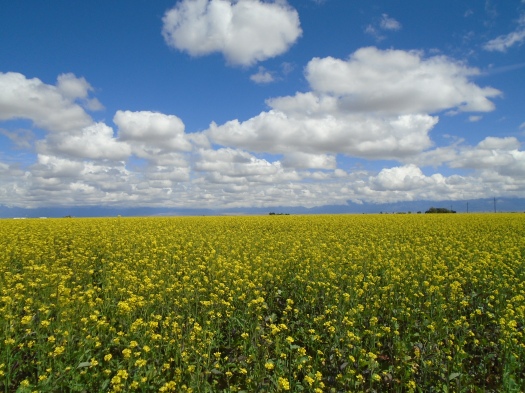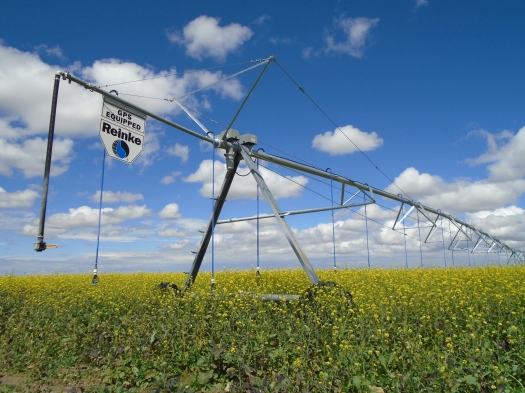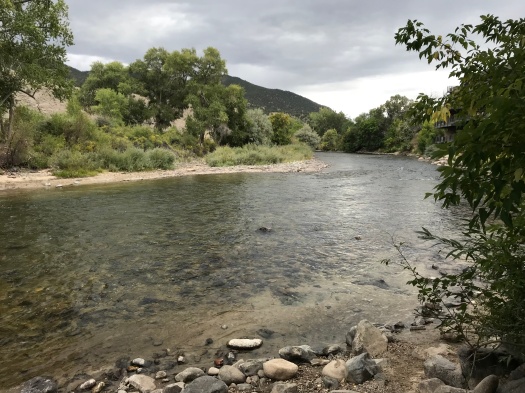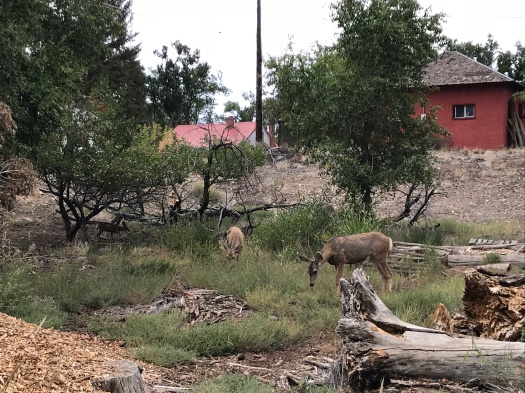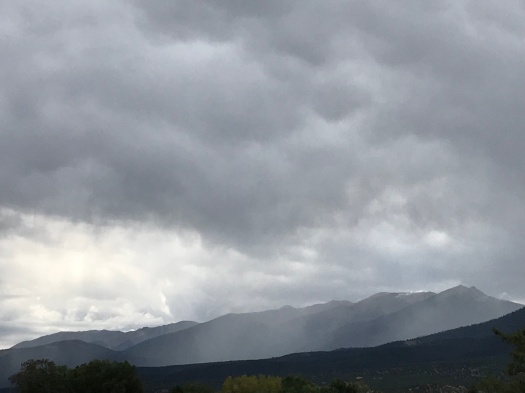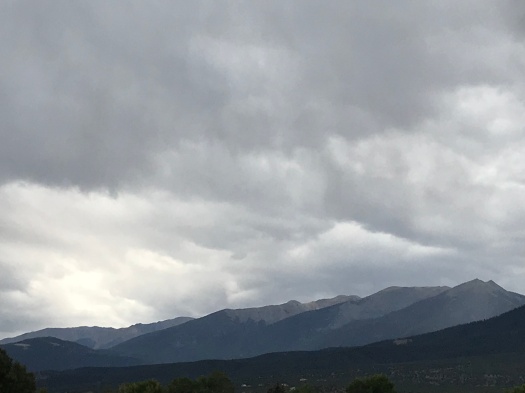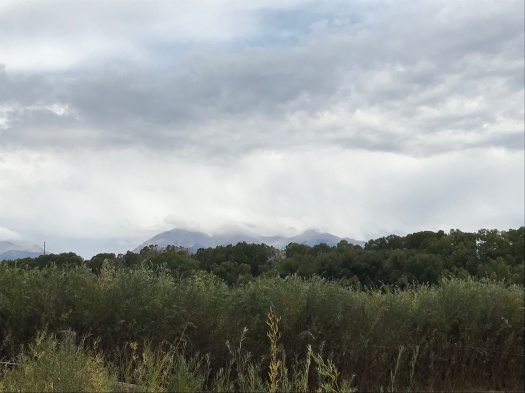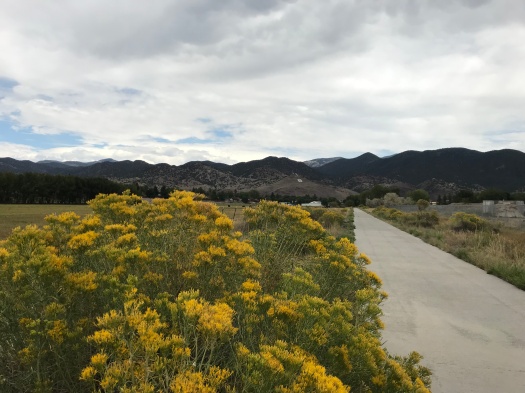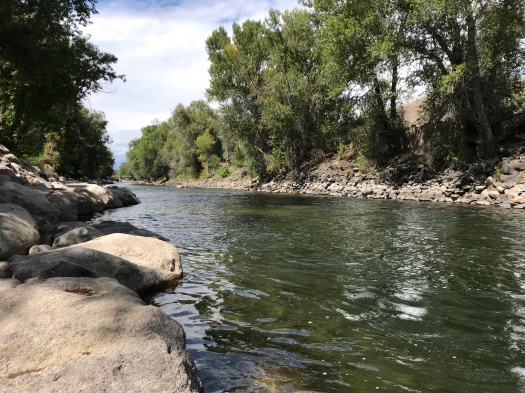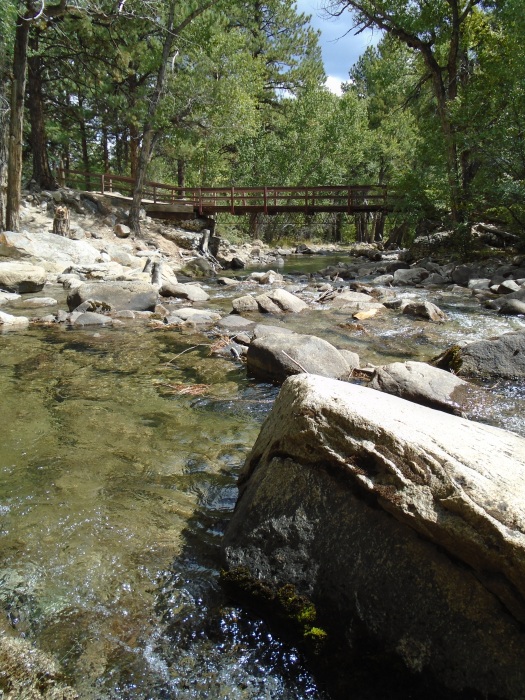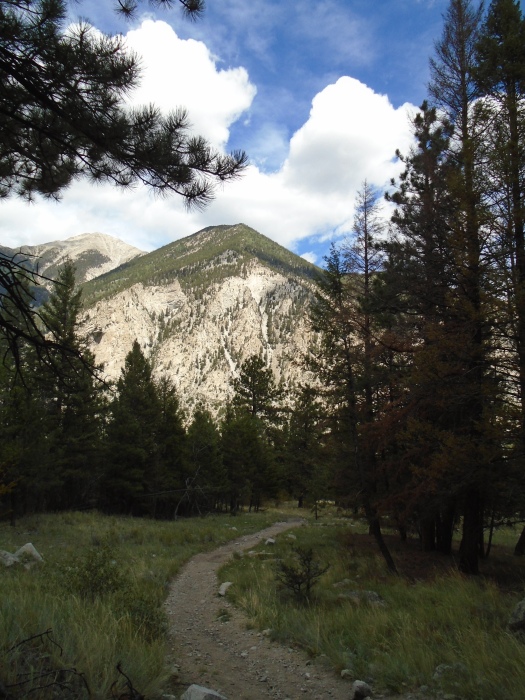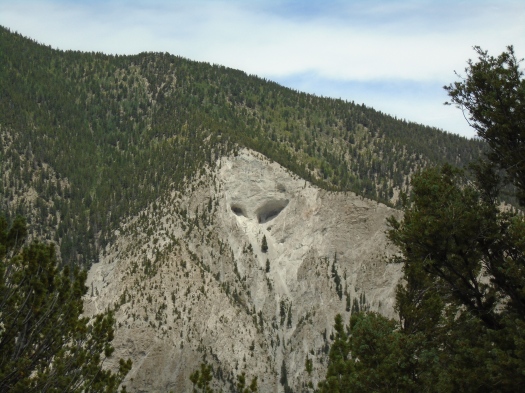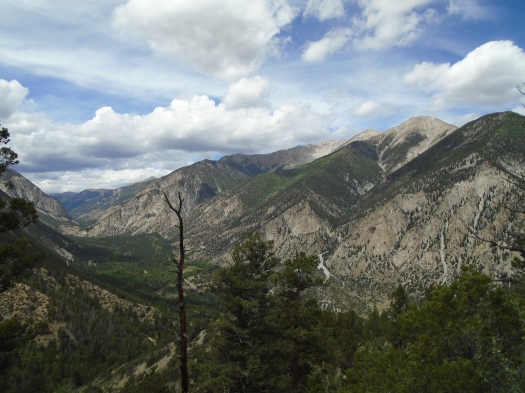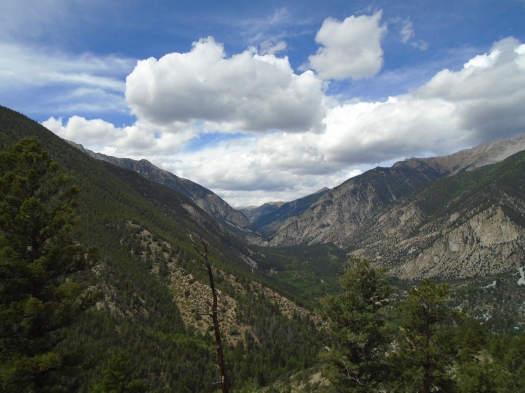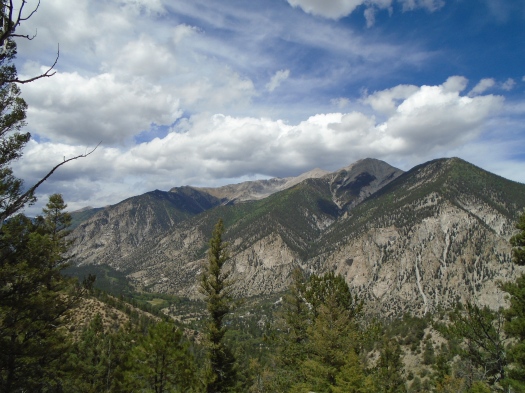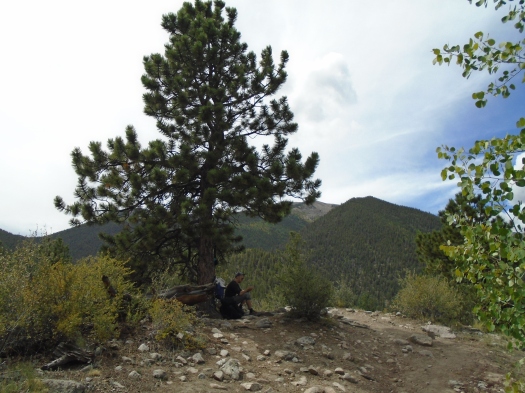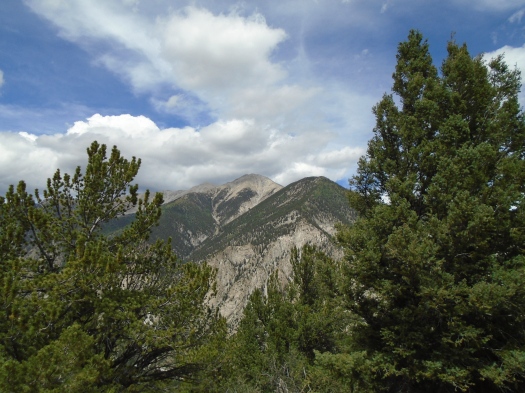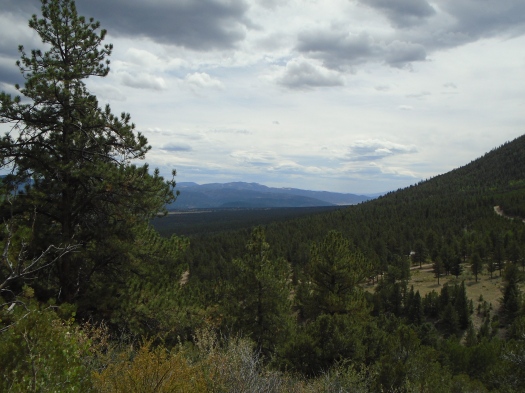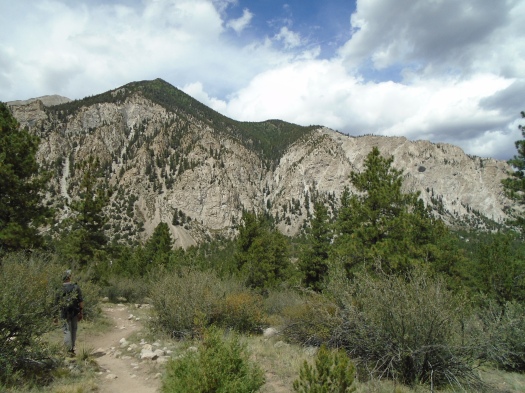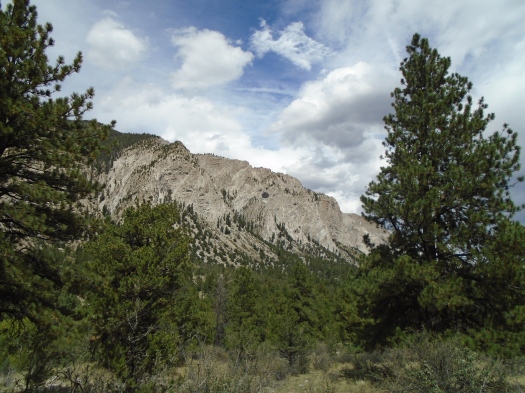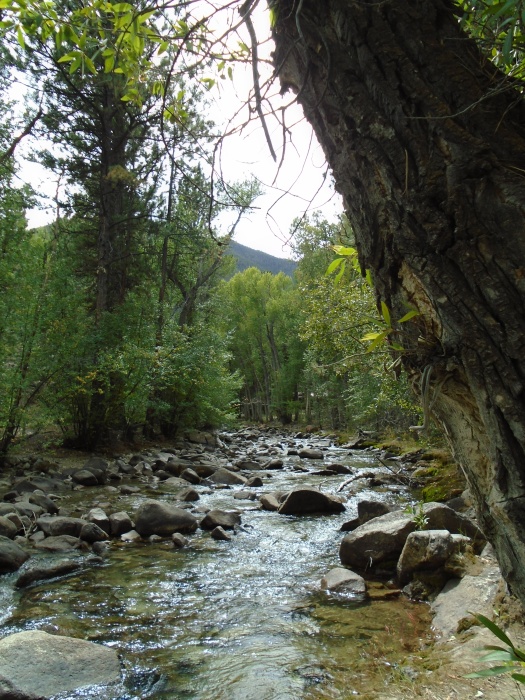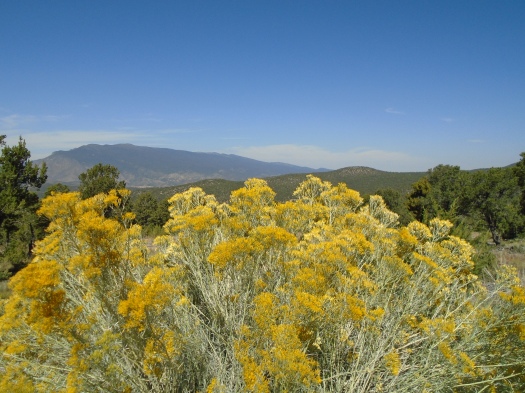
Sometimes you find the spot, sometimes you don’t.
I wasn’t sure it was a clearing. It looked like one, but so often something does, through the trees, and isn’t.
Before I realized it, my husband had scrambled off-trail to check it out.
“I think you’ll like it up here,” he said from above.
He was right.
The first thing I saw when I emerged from the trees was a single aspen sapling, brilliant green and yellow, leaves tossing in the breeze.
Next, a waist-high chamisa bush glowing yellow, butterflies and bees gamboling around it.
Then I turned around. The east side of the Sandias loomed blocklike in front of me, the ridges we’d just traversed rolling away before them.
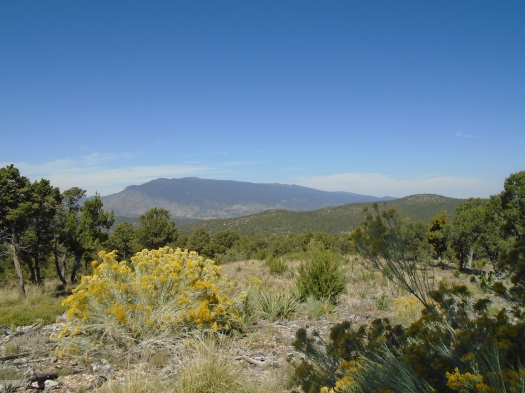
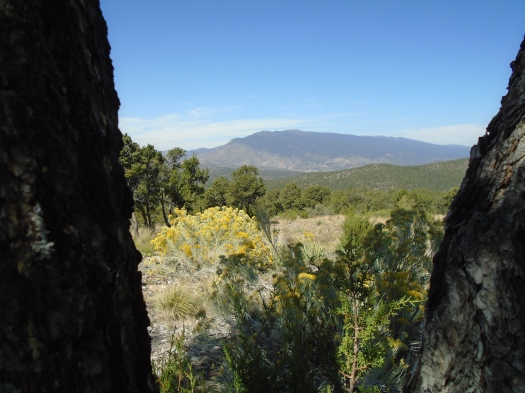
If you can find a high enough ridge in the Manzanita Mountains, you’ll see that view. But it’s rare to see as much of it as we did in that clearing, one of the most open and angled spots we’ve found in the range.
Before we reached that spot, we solved a mystery.
We’d started in the rock garden and mountain-bike haunt of Otero Canyon.
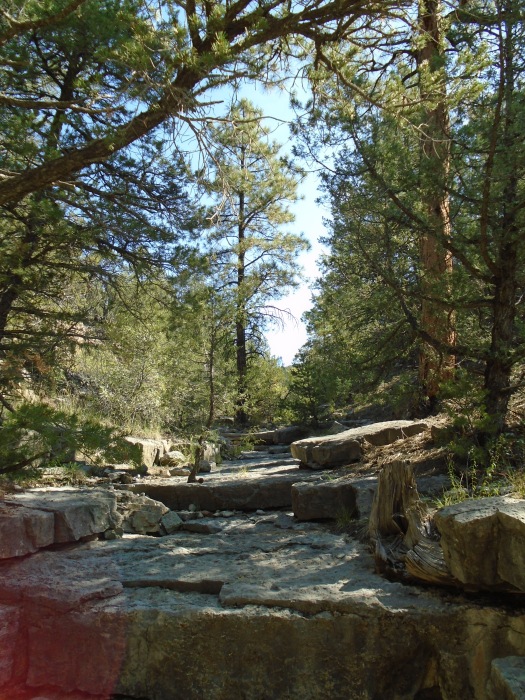
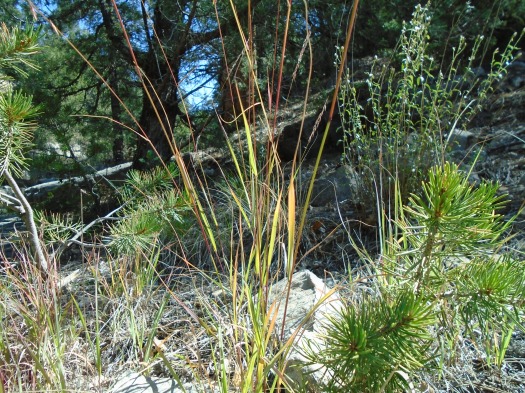
As before, we hit Department of Defense signs less than two miles in, warning us not to go any further.
This befuddled us, since the Forest Service labels that trail as nearly four miles in length. Then I realized the Forest Service mileage must reflect taking the trail out and back, though it isn’t marked that way.
There was only one thing to do: proceed up the trail called “Gnasty with a G.” It was the first time we’ve experienced this trail’s full steep and rugged length, and it lived up to its name.
A left turn on a sunbaked ridgetop put us on a loop back to our car via the Blue Ribbon Trail. The Blue Ribbon Trail is clearly one of the less-traveled in the Manzanitas; the frequent cyclist traffic stopped.
That’s where we found the clearing that gave us a new view on the Manzanitas.
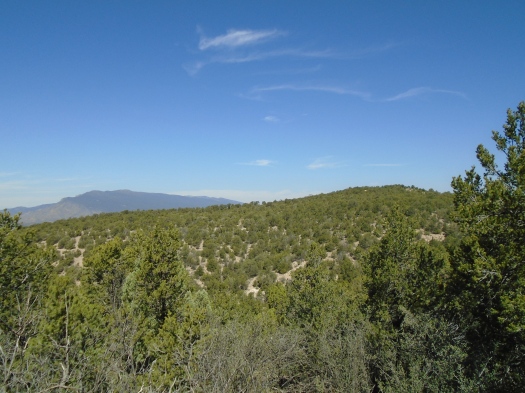
Hike length: 6 miles
Difficulty: moderate
Trail traffic: moderate, none on Blue Ribbon Trail
Wildlife spotted: hawk, crows, butterflies, dragonflies, jays, lizards
